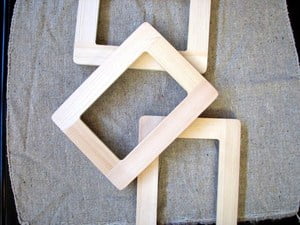The best treatments for rotten wood columns are to repair them with a mixture of wood putty and caulking. Wood columns can be an amazing accent to any home, but when they begin to decay and rot, repairing them can be a time consuming, tedious job. Even so, though, repairing these columns yourself will not only save you a substantial amount of money, but it will also give you a completed project that is worth displaying to your friends and family.
Before you begin this project, make sure to have the following items on hand:
• Wood putty
• Putty knife
• Drill
• 1/8 inch bit
• Caulk
• Sandpaper
Step 1: Remove the Rotten Wood
The first step in repairing a rotten column is to remove the rotten wood from the area being repaired. Use a putty knife, painting tool, or anything else that you have on hand to dig it all out of the hole. Take extreme care to be thorough when scooping it out, because you want all the rotten areas removed before beginning the repair.
Step 2: Drill Holes
After the hole has been completely cleaned out, you need to drill small holes into the solid wood, which will give the wood putty a place to adhere to. This step eliminates cracking later on when the putty dries and sets. To do this, simply use your drill with the 1/8 inch bit attached and drill small holes in various locations throughout the site to be repaired. All of these holes will get covered up, so you do not need to spend a ton of time getting them even and straight.
Step 3: Apply the Wood Putty
Estimate how much wood putty that you think will be needed to repair the hole or crack and mix it according to the directions. Use the putty knife to work the putty into all the holes and cracks in the area, being sure that ever flaw is covered. Once again, this allows the repaired spot to blend into the rest of the column without showing any signs that it had been repaired.
Step 4: Sand
Once the wood putty has dried completely, sand the area down so that it matches the original pattern. Take your time during this step to ensure that you match the curves and edges exactly.
Step 5: Finish
After the column has been formed, it is time to finish the job. Begin by using a painter’s caulk and filling any pits or cracks that may have formed during the drying and sanding process. Allow the caulk to dry and then prime the area with a good primer sealant mix.
Now, you have to match the original color and paint the repaired area so that it matches the rest of the column. If the entire area was in need of a new paint job, then this is the time to complete it. This not only will enhance the repair that you just completed, but give the entire area a fresh, crisp look.


